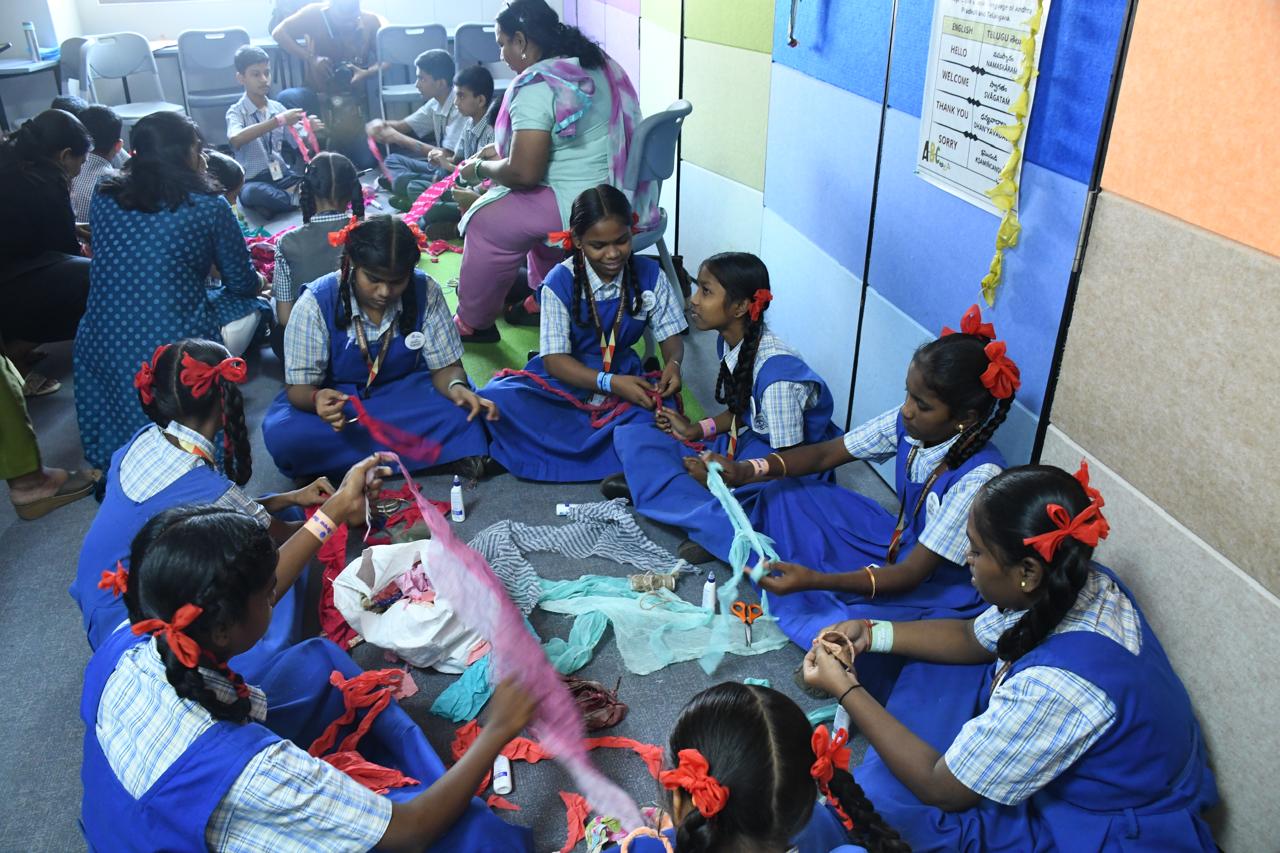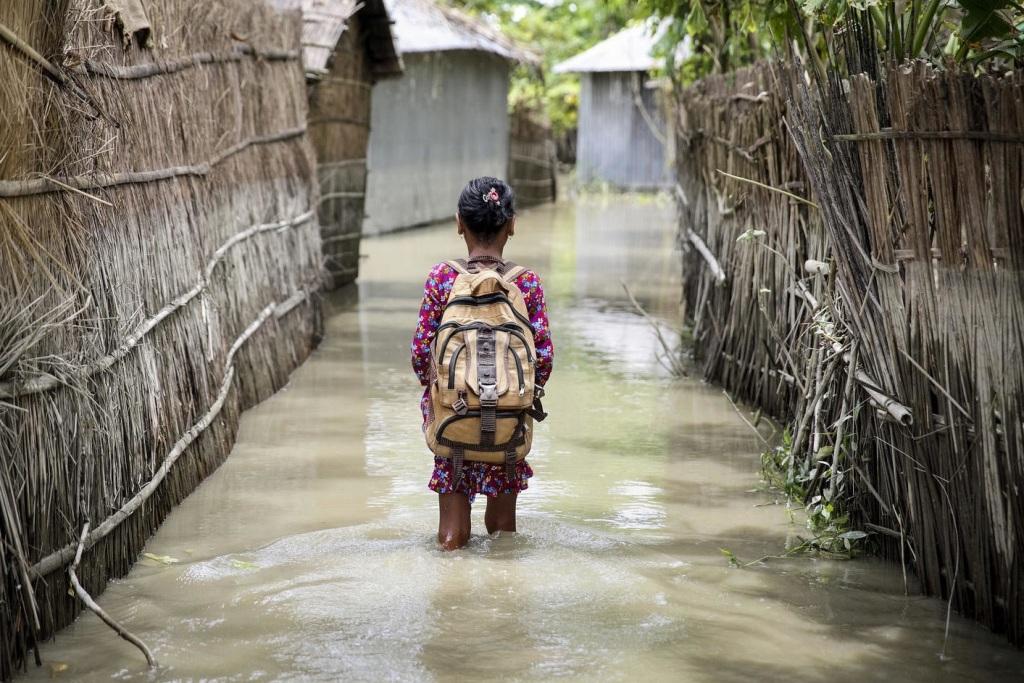 Ms. Pihu Jain holds the position of Head at the Girnar Foundation, the Corporate Social Responsibility (CSR) arm of the CarDekho Group. Her steadfast commitment has propelled the Girnar Foundation to effect transformative changes through eco-friendly practices, sustainable urban planning, and green infrastructure initiatives, leaving a positive impact on the lives of over 10,000 individuals. With a Bachelor of Arts degree from Maharani College, University of Rajasthan, Ms. Jain's unwavering passion for instigating change is exemplified by her dedicated focus on Sustainable Development Goals (SDGs) encompassing gender equality, climate action, sustainable cities, community well-being, and quality education. Her aspiration to encompass all 17 SDGs underscores her comprehensive and holistic approach to tackling global challenges.
Ms. Pihu Jain holds the position of Head at the Girnar Foundation, the Corporate Social Responsibility (CSR) arm of the CarDekho Group. Her steadfast commitment has propelled the Girnar Foundation to effect transformative changes through eco-friendly practices, sustainable urban planning, and green infrastructure initiatives, leaving a positive impact on the lives of over 10,000 individuals. With a Bachelor of Arts degree from Maharani College, University of Rajasthan, Ms. Jain's unwavering passion for instigating change is exemplified by her dedicated focus on Sustainable Development Goals (SDGs) encompassing gender equality, climate action, sustainable cities, community well-being, and quality education. Her aspiration to encompass all 17 SDGs underscores her comprehensive and holistic approach to tackling global challenges.
In this article, Ms. Jain explores the crucial role of schools in nurturing a sustainable future, underlining the power of education to drive positive change. She emphasizes comprehensive environmental education, integration across disciplines, promotion of gender diversity, and the role of initiatives like the National Education Policy (NEP), Green Schools Program, and NGO partnerships.
Her insights serve as a compelling reminder of the significance of education in fostering a sustainable tomorrow. Read on to gather deeper insights.
(Article Begins)
With rising environmental challenges, such as climate change, resource depletion, and environmental degradation, the need for sustainable practices has never been more critical. The fate of our planet rests in the hands of those who inhabit it now and those who will inherit it in the years to come. Education serves as the foundation for shaping environmentally and socially responsible individuals, and schools have started embracing this responsibility wholeheartedly.
As per UNESCO, education for sustainable development empowers people to change their thoughts and work towards a sustainable future. Gradually, schools are paving the way for a more sustainable and prosperous future with a focus on comprehensive environmental education programs. By incorporating sustainability into the curriculum across disciplines, students comprehensively understand the interconnectedness between human actions and the environment. This holistic approach raises awareness and empowers young minds to think critically about sustainability challenges and potential solutions.
Government initiatives to implement sustainability in the curriculum.
Recognizing the significance of integrating environmental awareness, the National Education Policy (NEP) of 2020 has made environmental education part of school curricula. The policy emphasizes the importance of learning certain skills, such as environmental awareness, including water and resource conservation, for becoming productive and adaptable human beings in the rapidly changing landscape. The introduction of Environment Studies as a subject will ensure that students develop important skills at all levels. Education about environment preservation and sustainable lifestyle facilitates awareness and sensitivity towards environmental conservation and sustainable development.
At the UNFCCC CoP 26 Global Leaders' Summit in Glasgow, the Indian Prime Minister emphasized the mantra of "Lifestyle for Environment" and committed to achieving Net Zero Carbon Emissions by 2030. As part of the ongoing efforts, on October 20th, 2022, the Prime Minister launched Mission Life, a global movement aimed at safeguarding our environment from the impacts of climate change. This, combined with the policies in NEP 2020, showcases India's commitment to promoting environmental education in schools and fostering a sustainable future.
Here are some ways schools can enable children to build a sustainable future:
Nurturing environmental consciousness in students-
Schools nurture environmentally conscious behaviour among students. When students actively participate in eco-friendly initiatives, such as using reusable water bottles, reducing single-use plastics, and opting for sustainable materials, develop a personal connection with the environment. This sense of ownership and responsibility fosters a long-lasting commitment to protect and preserve natural resources, empowering students to become active agents of change in their communities.
Beyond the classroom, schools can further ingrain sustainability by integrating it into extra-curricular activities. Environmental clubs, sustainability workshops, clean-up drives, and plantation drives allow students to actively engage with sustainability initiatives. These activities enable students to witness the impact of their actions on the environment, fostering a deeper sense of responsibility and encouraging them to champion sustainable practices outside the school environment.
Encouraging sustainable infrastructure and practices-
The physical infrastructure of schools can serve as good examples of sustainable practices. By implementing energy-efficient lighting, renewable energy sources, and water conservation systems, schools can demonstrate the practicality and benefits of sustainable solutions to students and the broader community. Schools across India have adopted initiatives like Green Schools Program to promote resource conservation, solar energy utilisation, and composting, transforming school campuses and inspiring students to adopt sustainable habits that extend beyond the classroom into their communities and homes.
In 2022, around 46 schools in Goa took significant steps towards green and sustainable initiatives by installing rainwater harvesting systems. It is a remarkable initiative that will instill the power of sustainable habits in students. Also, promoting environmentally friendly habits within school premises, such as reducing waste and promoting green transportation options, is a great way to encourage sustainable behavior for students to replicate in their daily lives.
Partnerships with NGOs and Environmental Organizations-
Establishing partnerships with local and national NGOs and environmental organizations to give students exposure to real-world projects and initiatives. Such collaborations allow students to actively contribute to ongoing efforts and learn from experienced professionals in the field.
Promote gender diversity-
Promoting gender diversity in educational institutions goes beyond ensuring equal access to education for all genders. It involves creating a nurturing environment where individuals of different genders can learn, grow, and contribute to their fullest potential. By providing opportunities for all genders to receive education, schools create diverse learning environments that empower different approaches and perspectives to tackle sustainability challenges. Gender diversity in schools fosters a broader and more inclusive understanding of sustainability issues, leading to innovative solutions catering to society's diverse needs and concerns.
Conclusion
Creating green campuses and implementing sustainable initiatives at schools have a momentous role to play in fostering a sustainable future. Not just this, creating blended learning programmes helps equip the young generation with the requisite knowledge, skills, attitudes, and values for an eco-friendly lifestyle. As centers of education and inspiration, schools can shape environmentally conscious citizens who will contribute to a healthier, greener, and more sustainable planet. Embracing this responsibility today will pave the way for a promising and sustainable tomorrow.



 Ms. Pihu Jain holds the position of Head at the Girnar Foundation, the Corporate Social Responsibility (CSR) arm of the CarDekho Group. Her steadfast commitment has propelled the Girnar Foundation to effect transformative changes through eco-friendly practices, sustainable urban planning, and green infrastructure initiatives, leaving a positive impact on the lives of over 10,000 individuals. With a Bachelor of Arts degree from Maharani College, University of Rajasthan, Ms. Jain's unwavering passion for instigating change is exemplified by her dedicated focus on Sustainable Development Goals (SDGs) encompassing gender equality, climate action, sustainable cities, community well-being, and quality education. Her aspiration to encompass all 17 SDGs underscores her comprehensive and holistic approach to tackling global challenges.
Ms. Pihu Jain holds the position of Head at the Girnar Foundation, the Corporate Social Responsibility (CSR) arm of the CarDekho Group. Her steadfast commitment has propelled the Girnar Foundation to effect transformative changes through eco-friendly practices, sustainable urban planning, and green infrastructure initiatives, leaving a positive impact on the lives of over 10,000 individuals. With a Bachelor of Arts degree from Maharani College, University of Rajasthan, Ms. Jain's unwavering passion for instigating change is exemplified by her dedicated focus on Sustainable Development Goals (SDGs) encompassing gender equality, climate action, sustainable cities, community well-being, and quality education. Her aspiration to encompass all 17 SDGs underscores her comprehensive and holistic approach to tackling global challenges.












.jpg)




